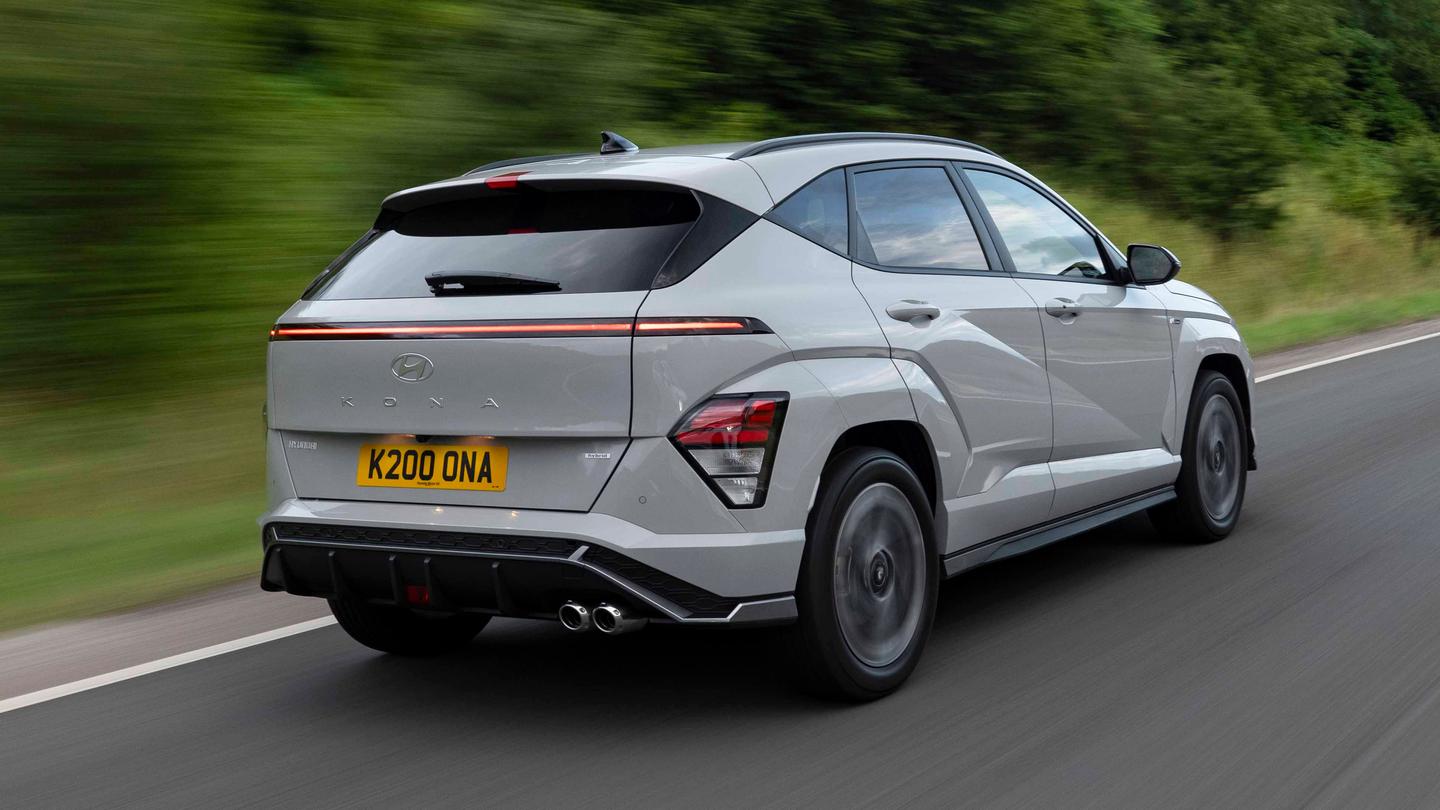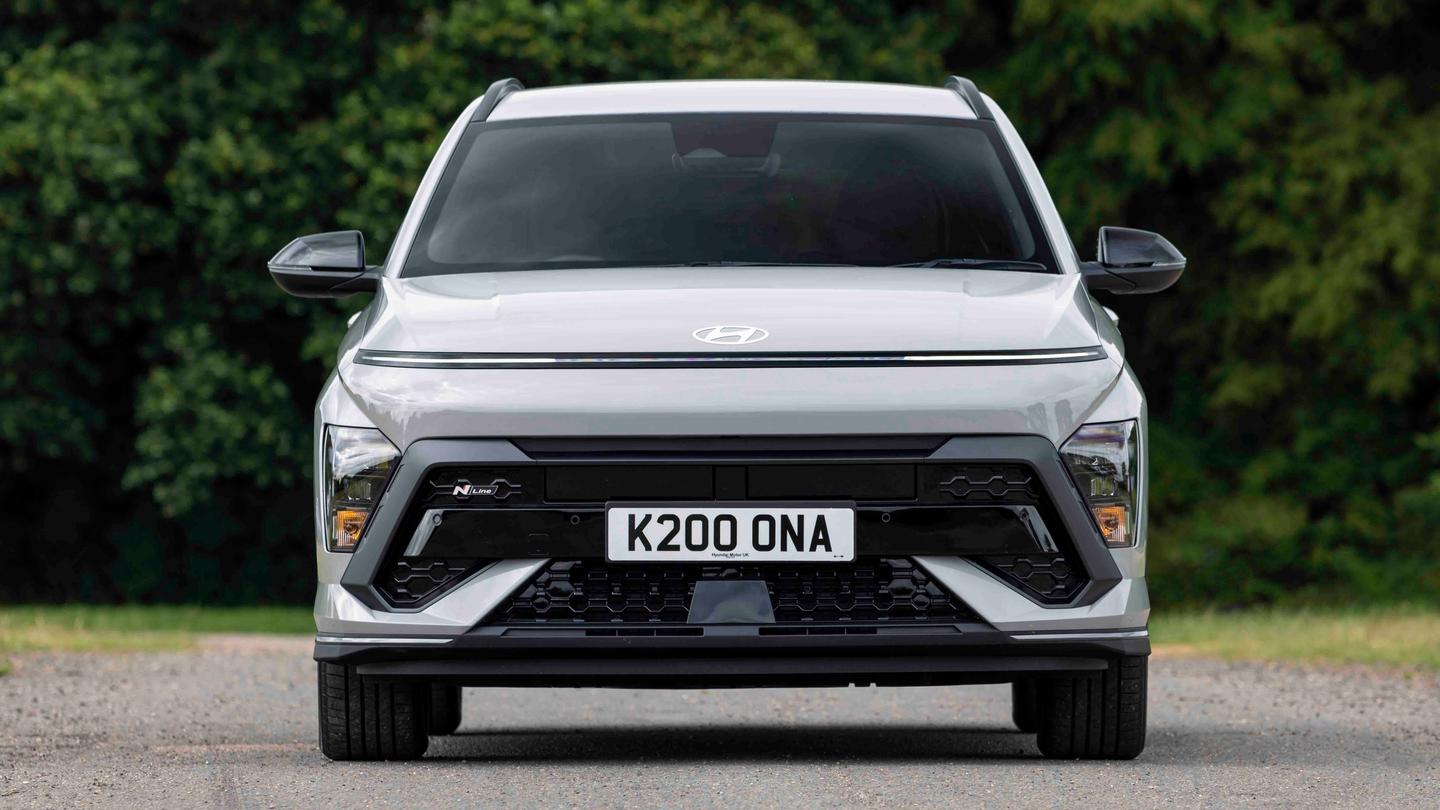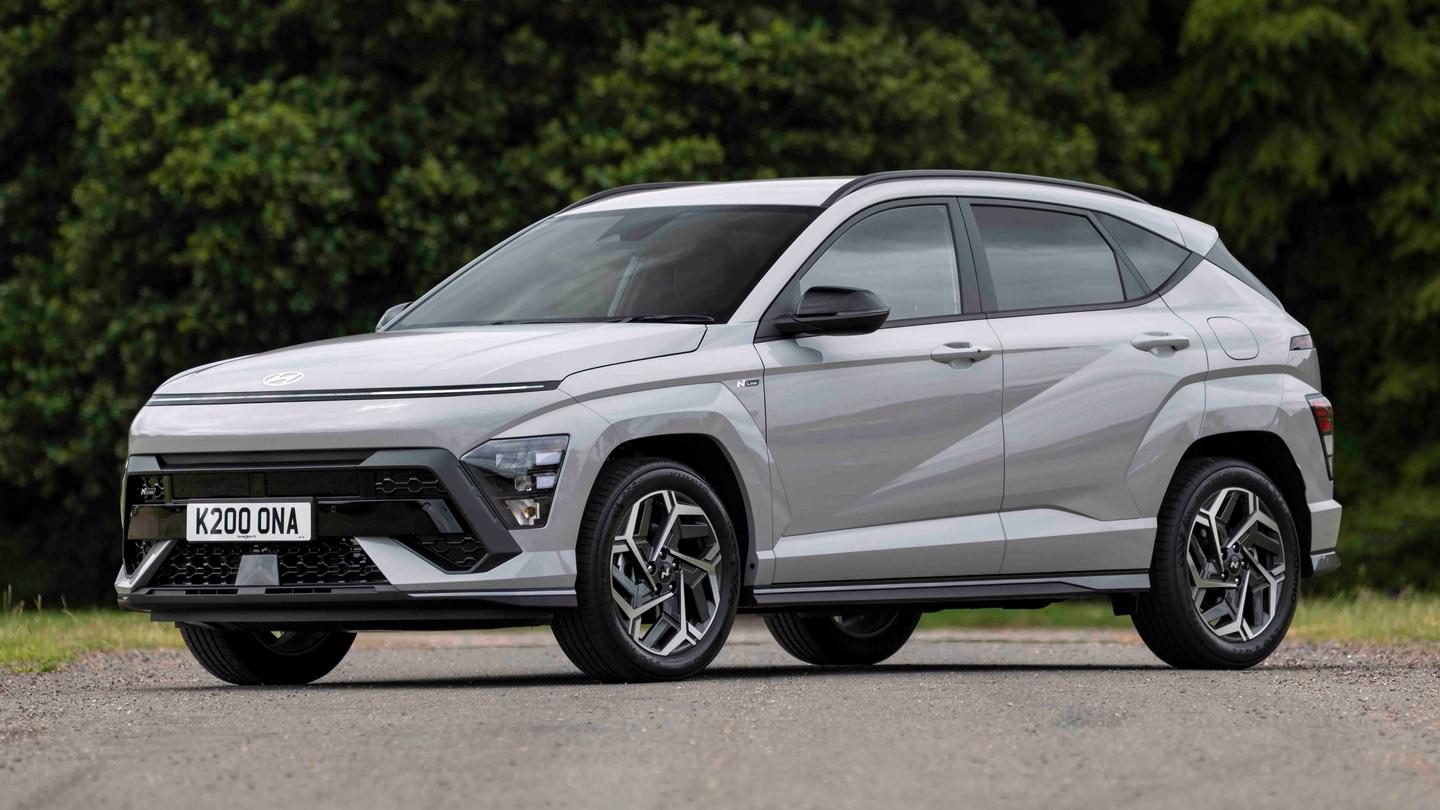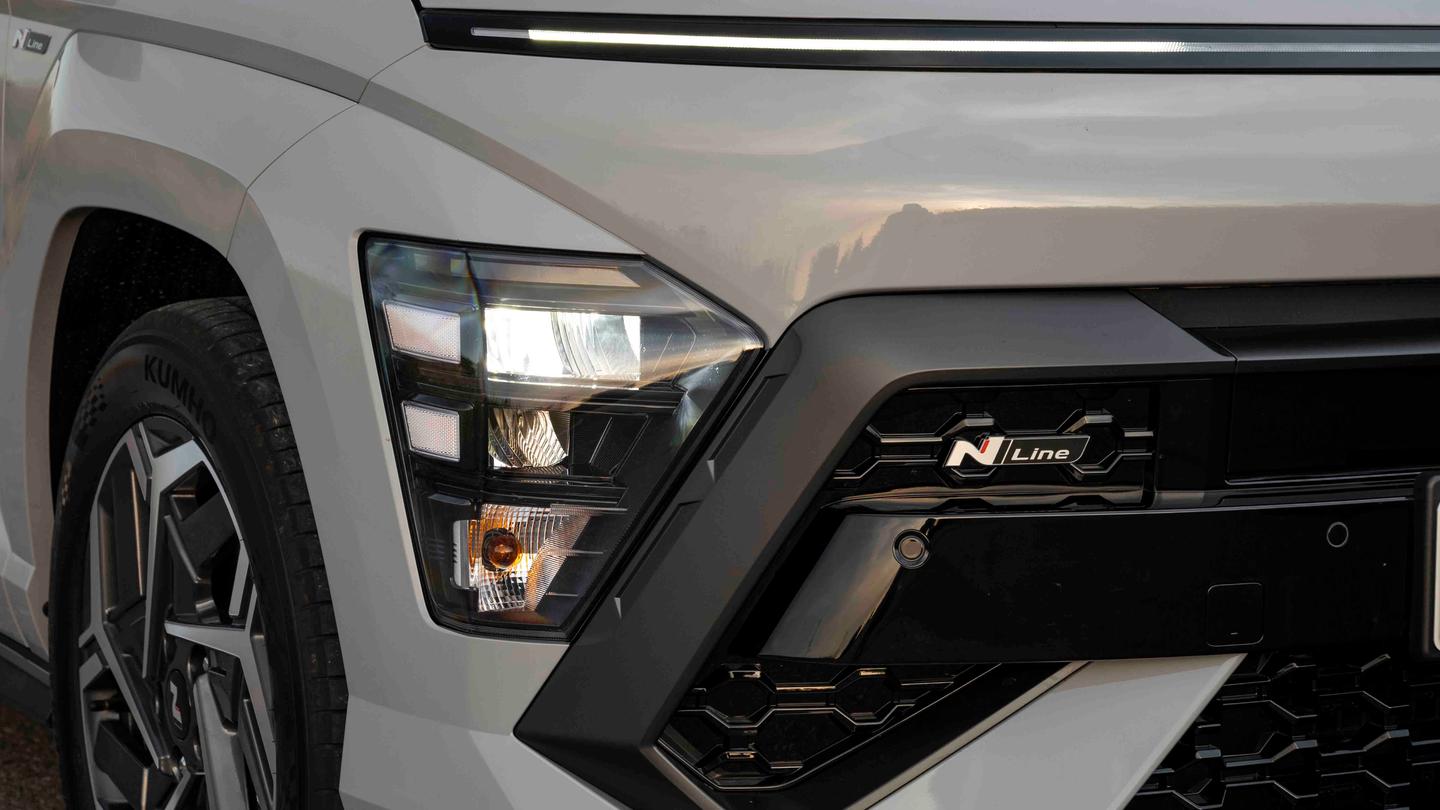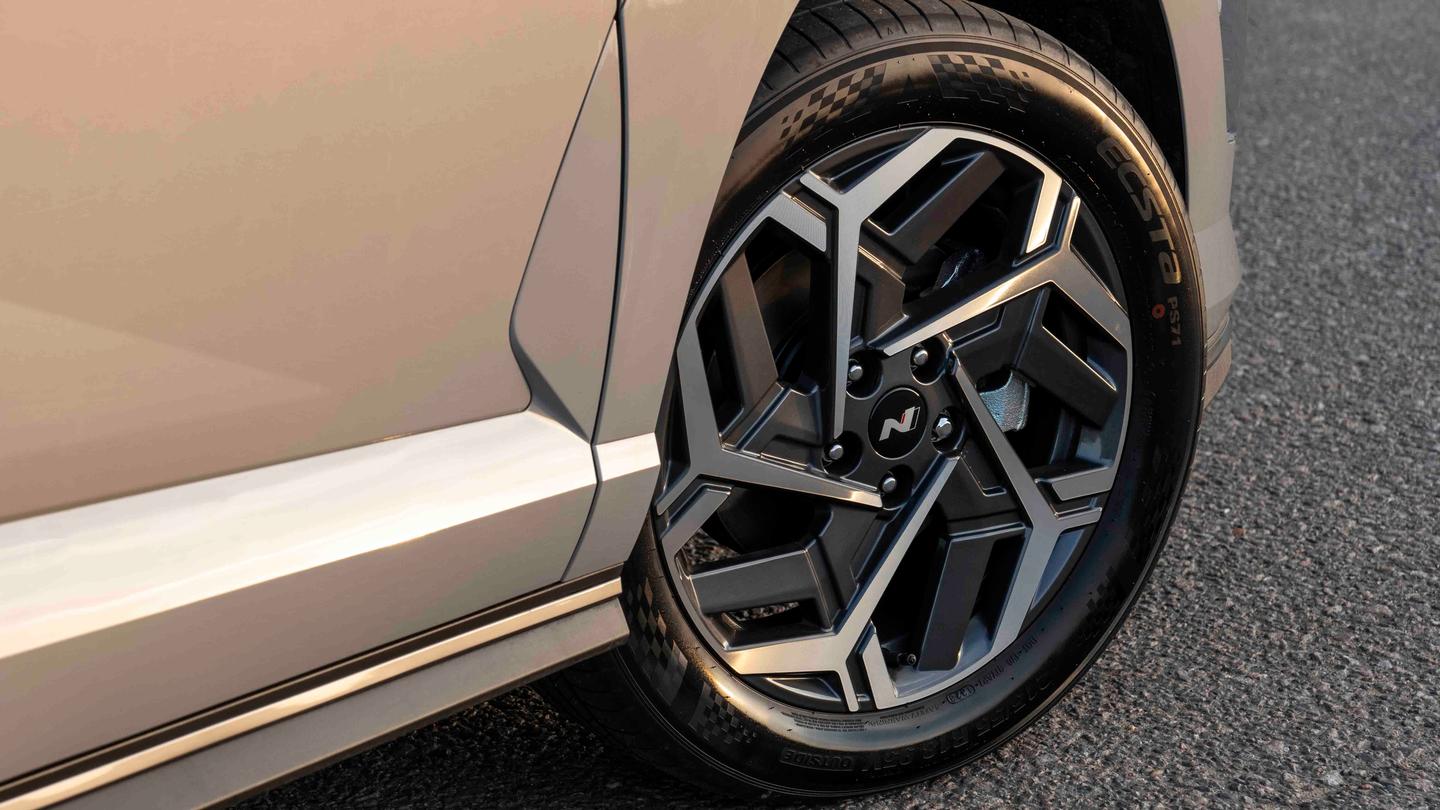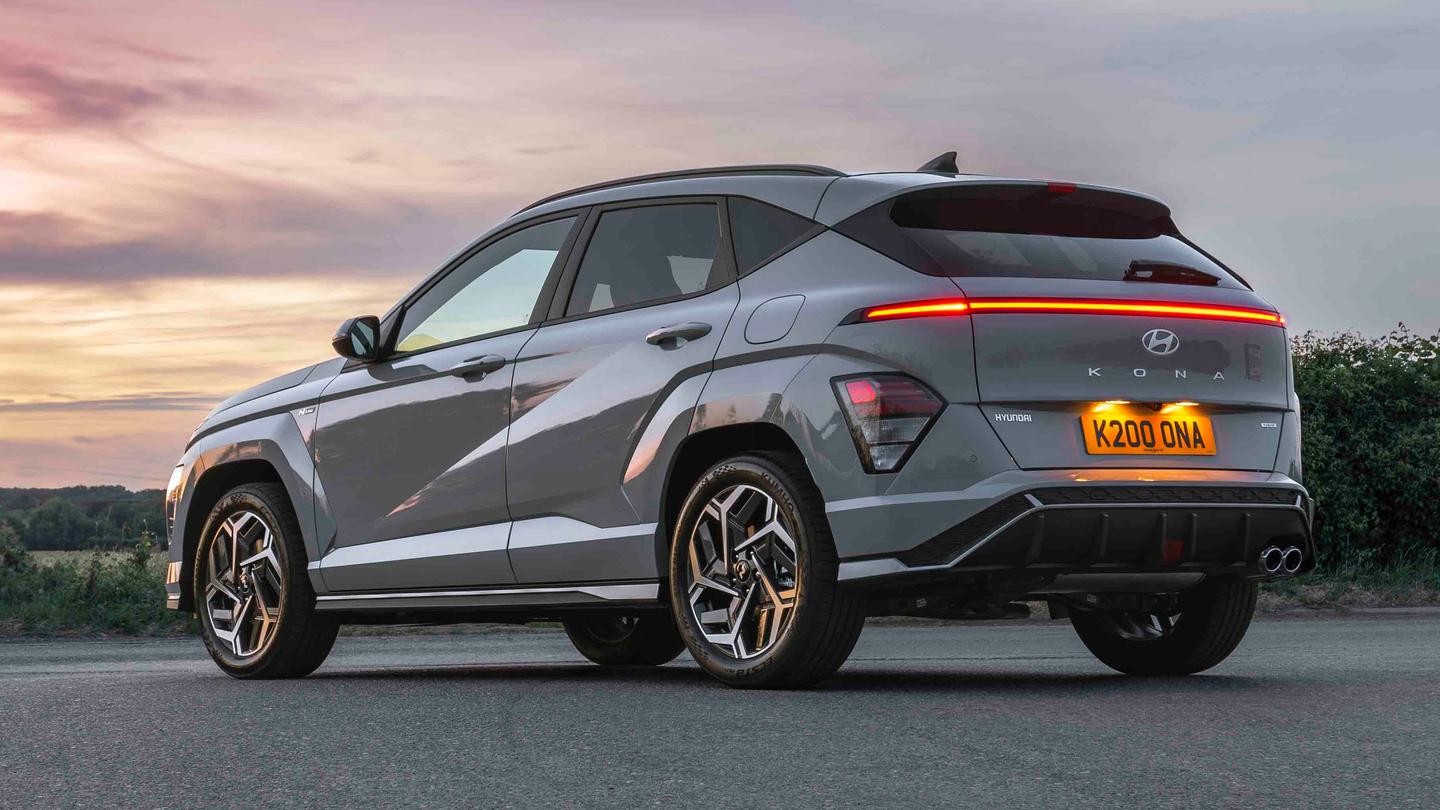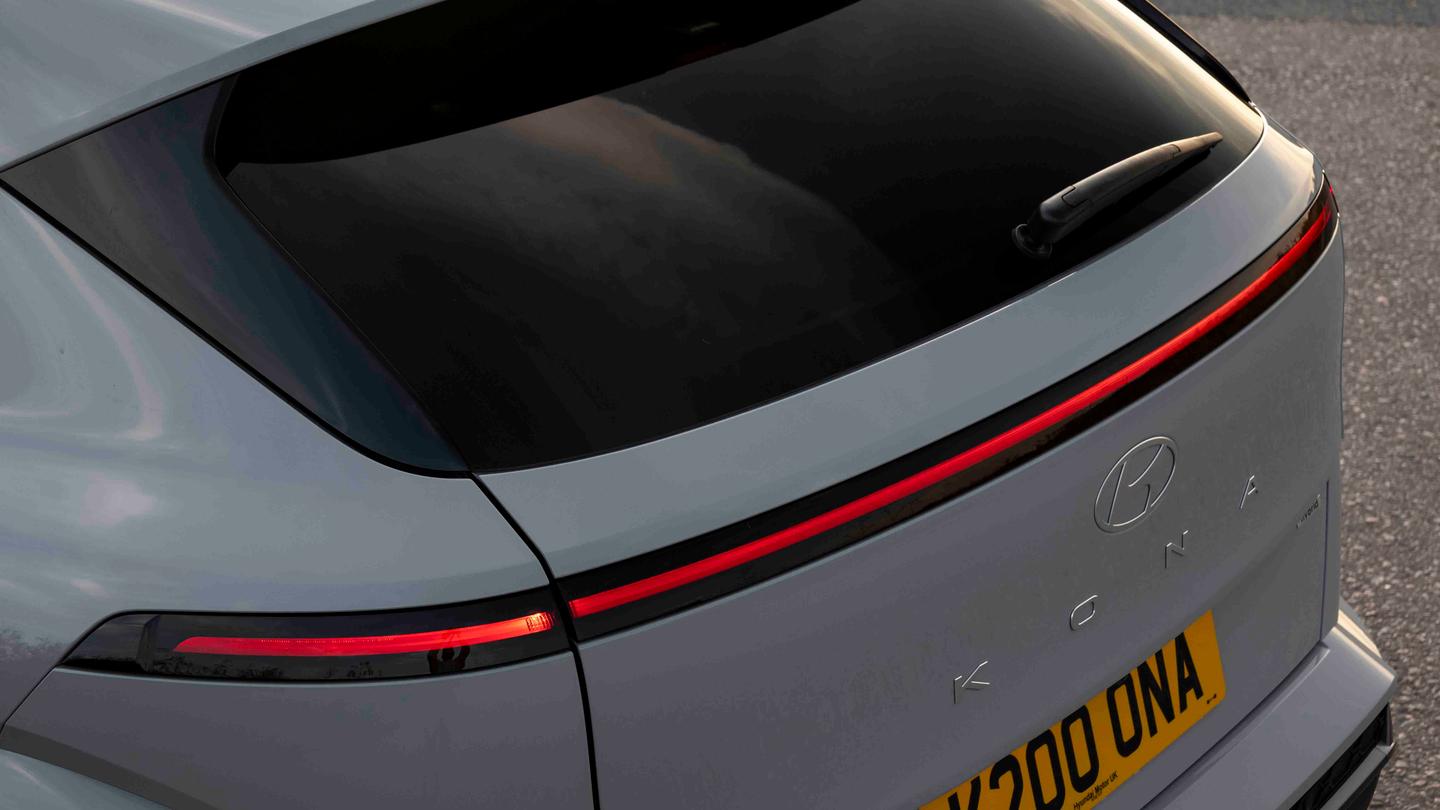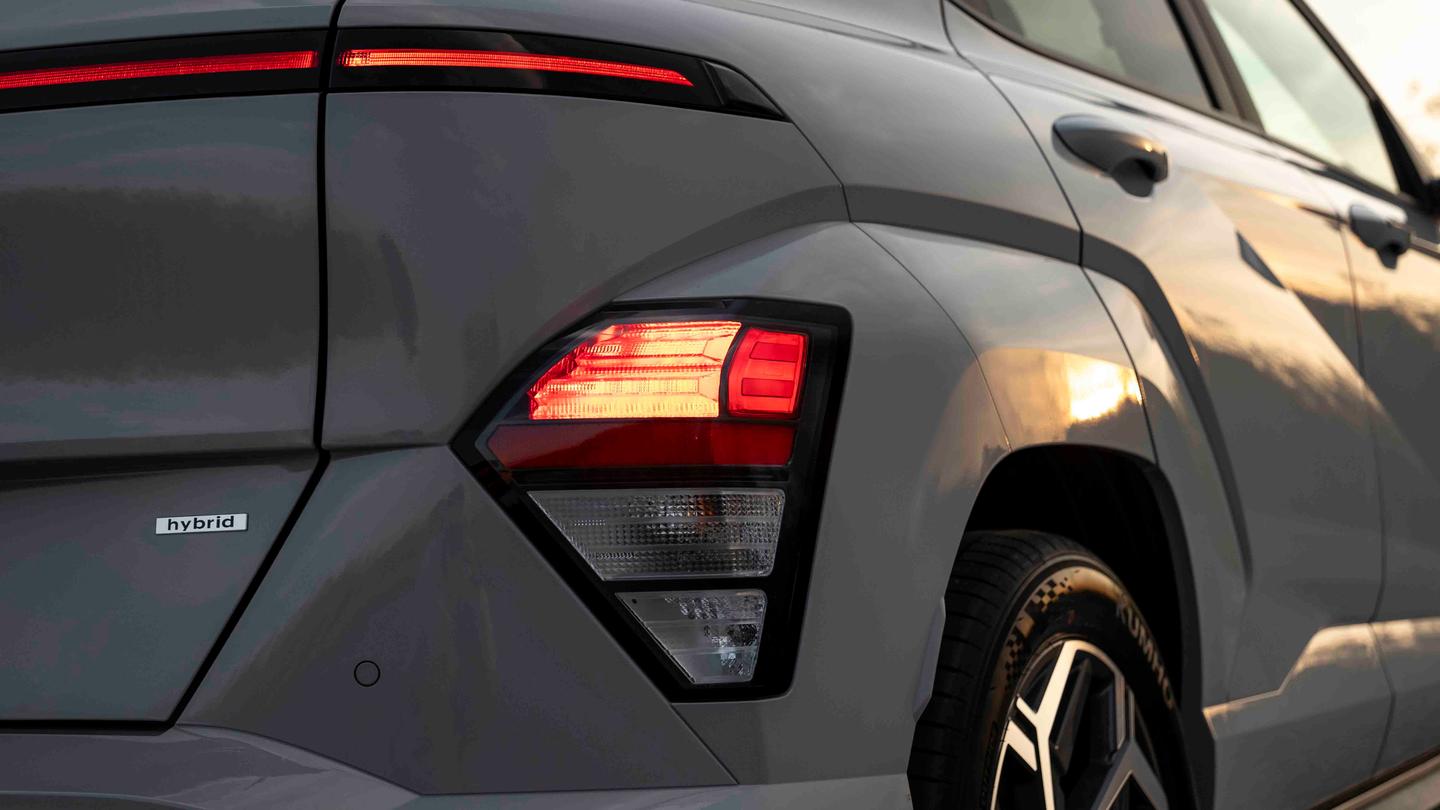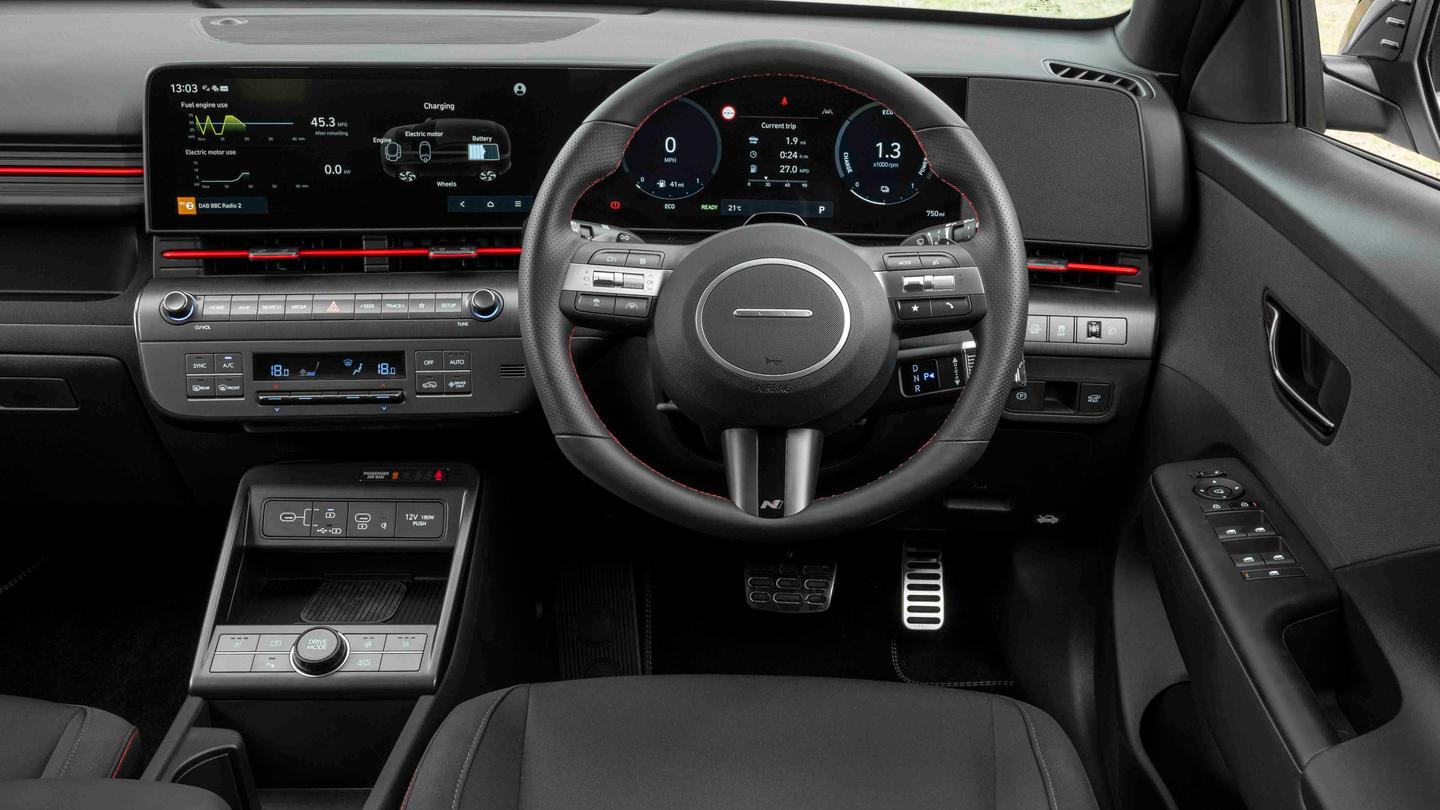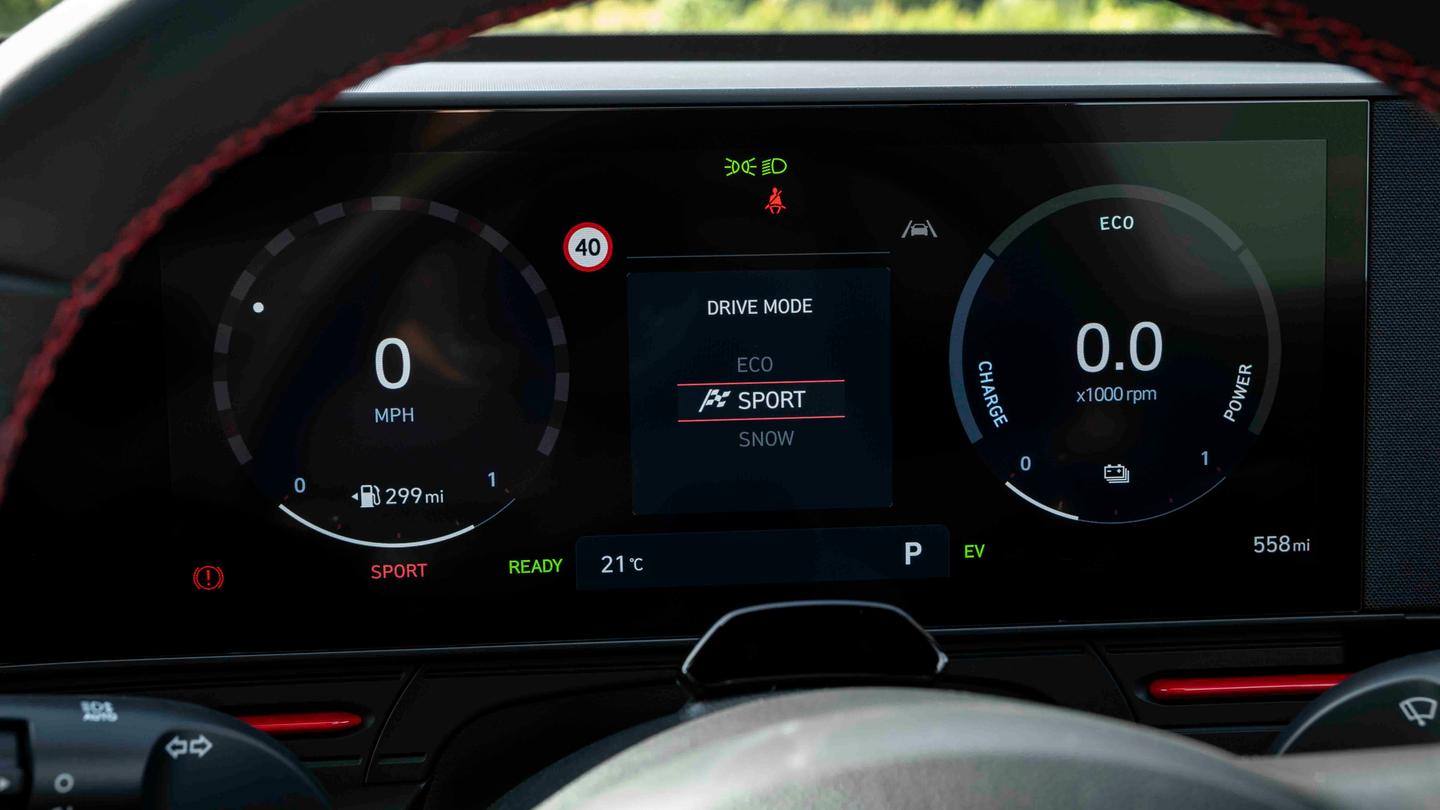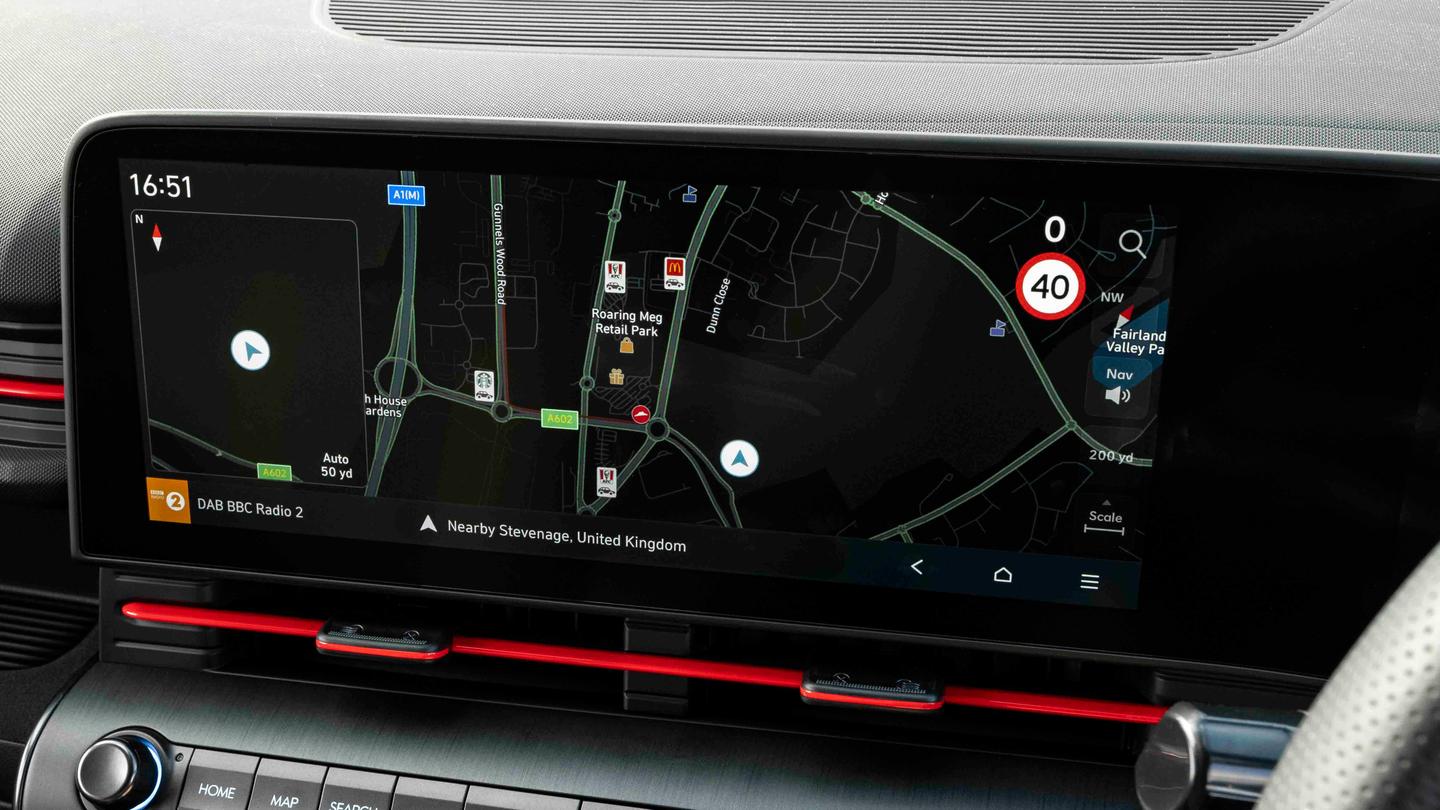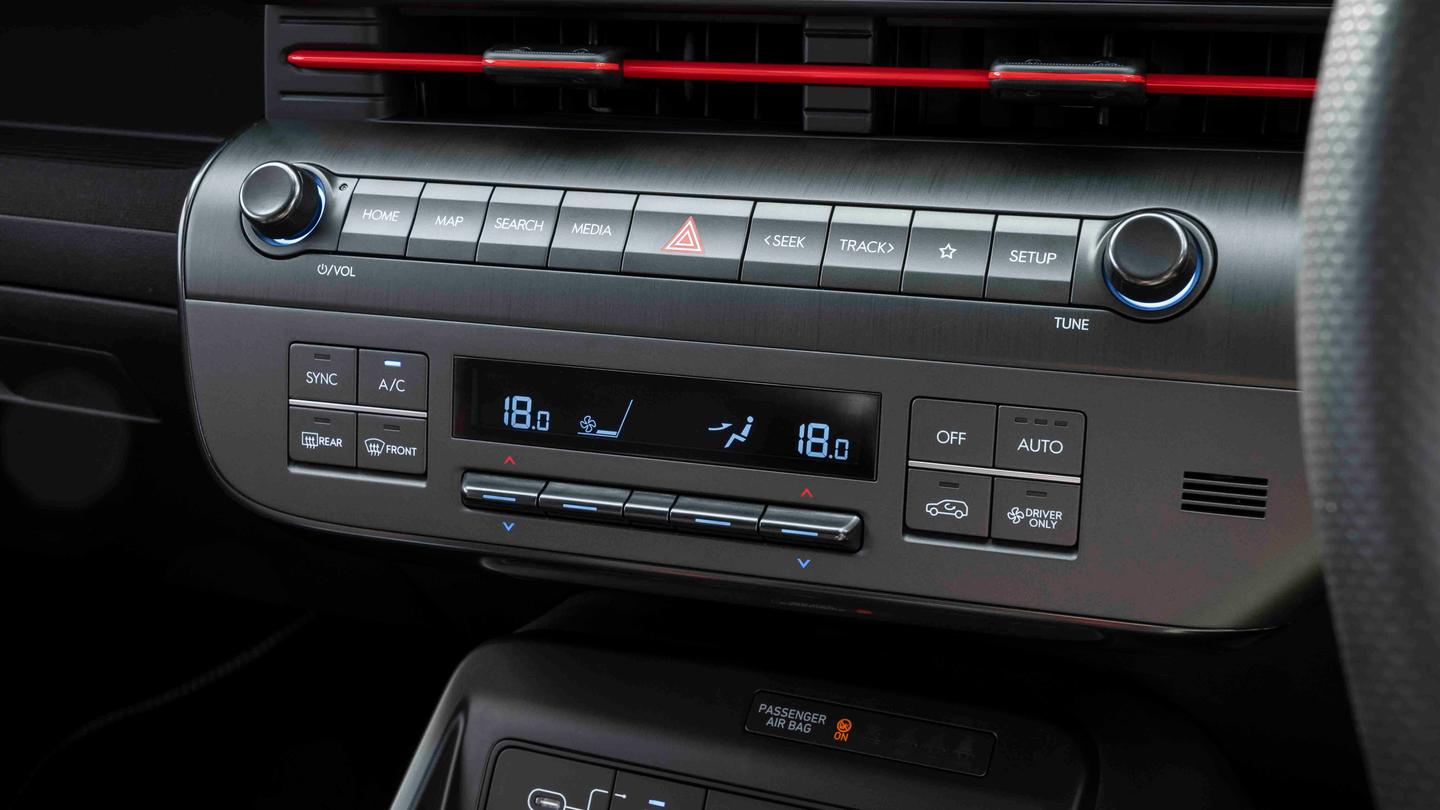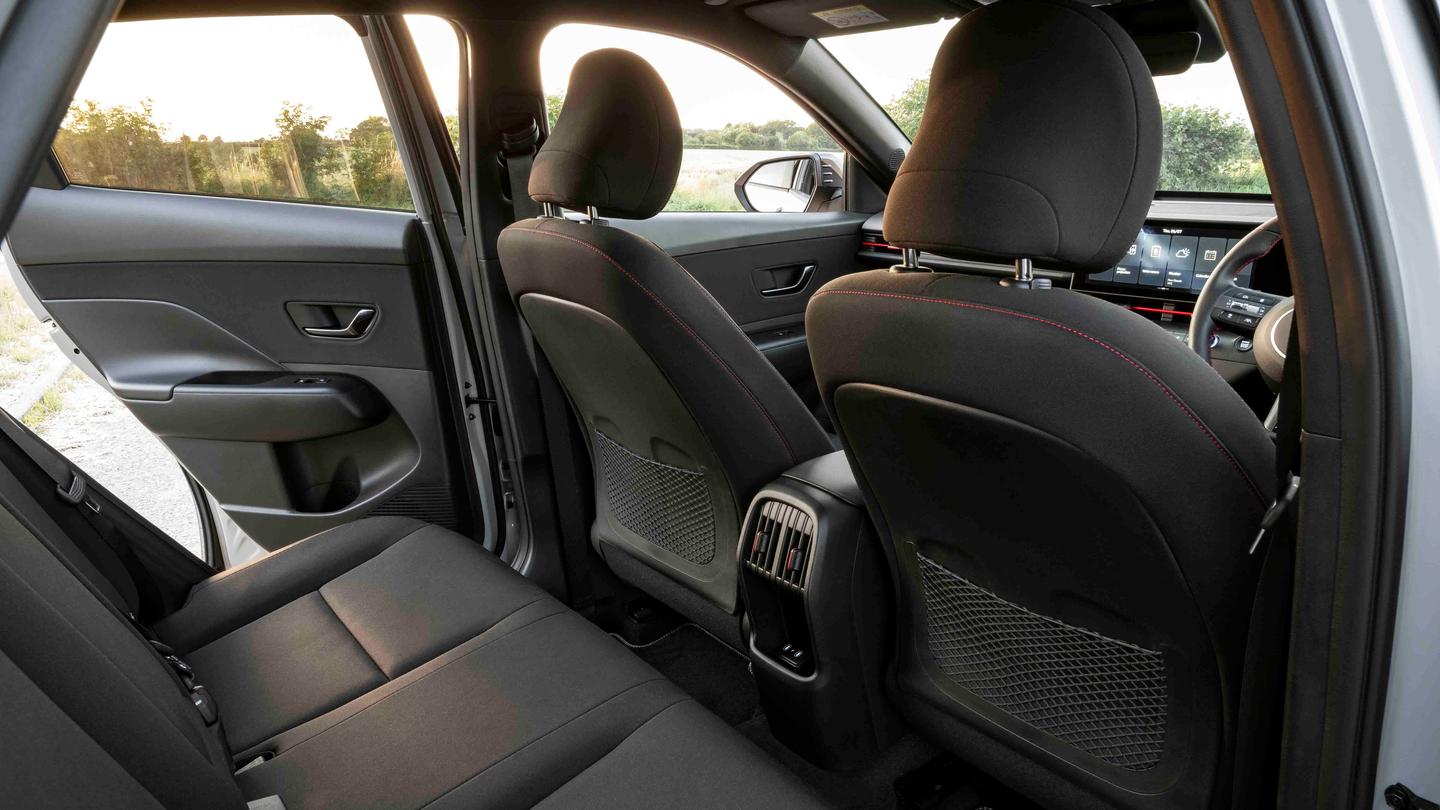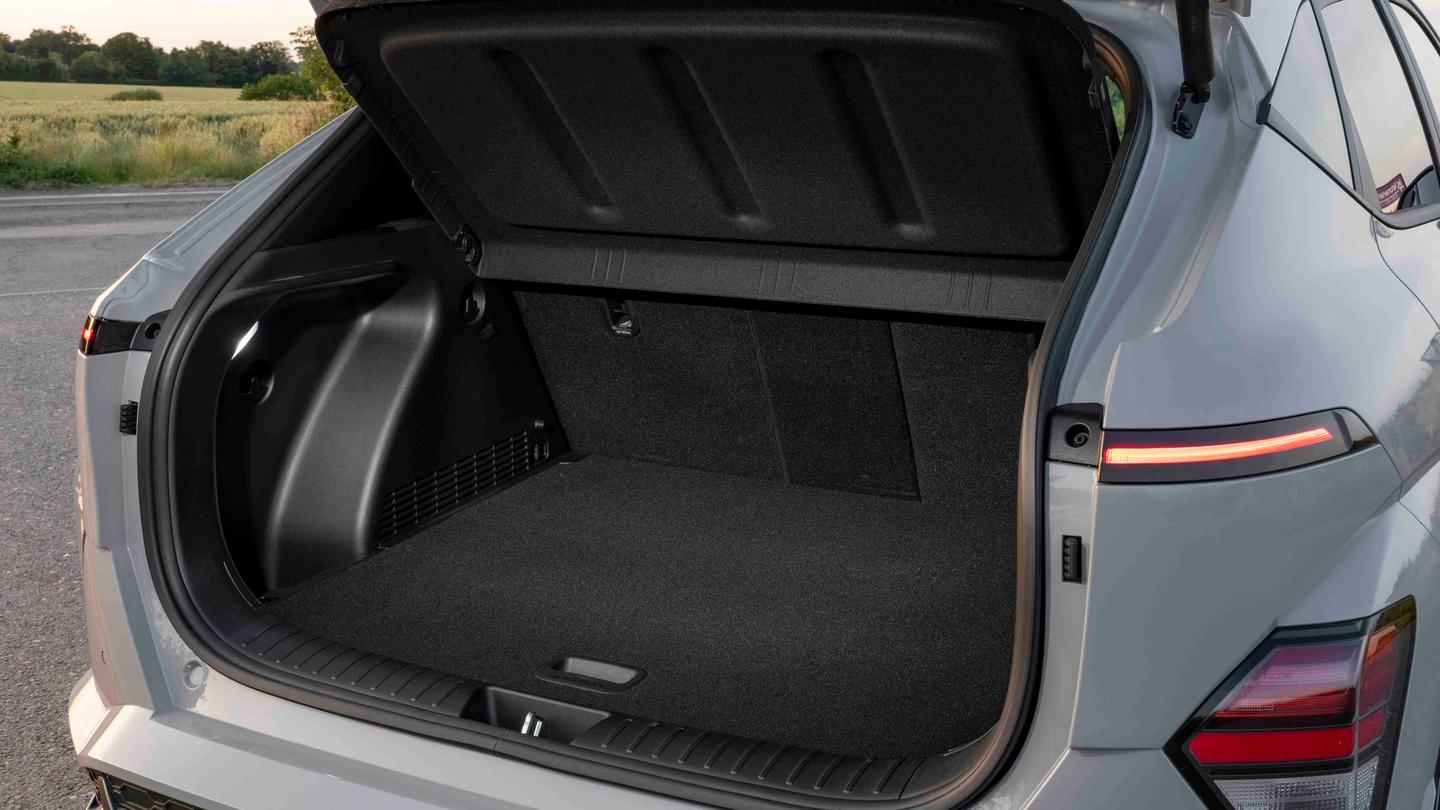
Hyundai Kona interior, tech and practicality
Gallery
Comfort and visibility
Hyundai clearly took inspiration from the futuristic Ioniq 5 and Ioniq 6 when it came to designing the Kona’s interior. Like those cars, the Kona boasts two large screens side-by-side, without a cowl over the driver’s display for a spacious, airy feel.
But unlike the low-slung Ioniq 6, the Kona’s SUV aspirations present themselves in its tall, flowing centre console. This places a lot of buttons right in your view, which makes the Kona’s cabin feel a bit like a plane’s cockpit. Handily, it also means the buttons for important features are close to you and easy to use while driving.
The previous Kona was well built but lacked a premium sheen. Material quality has taken a step up in the new car and it feels more modern, but then you could argue it should because it’s more expensive.
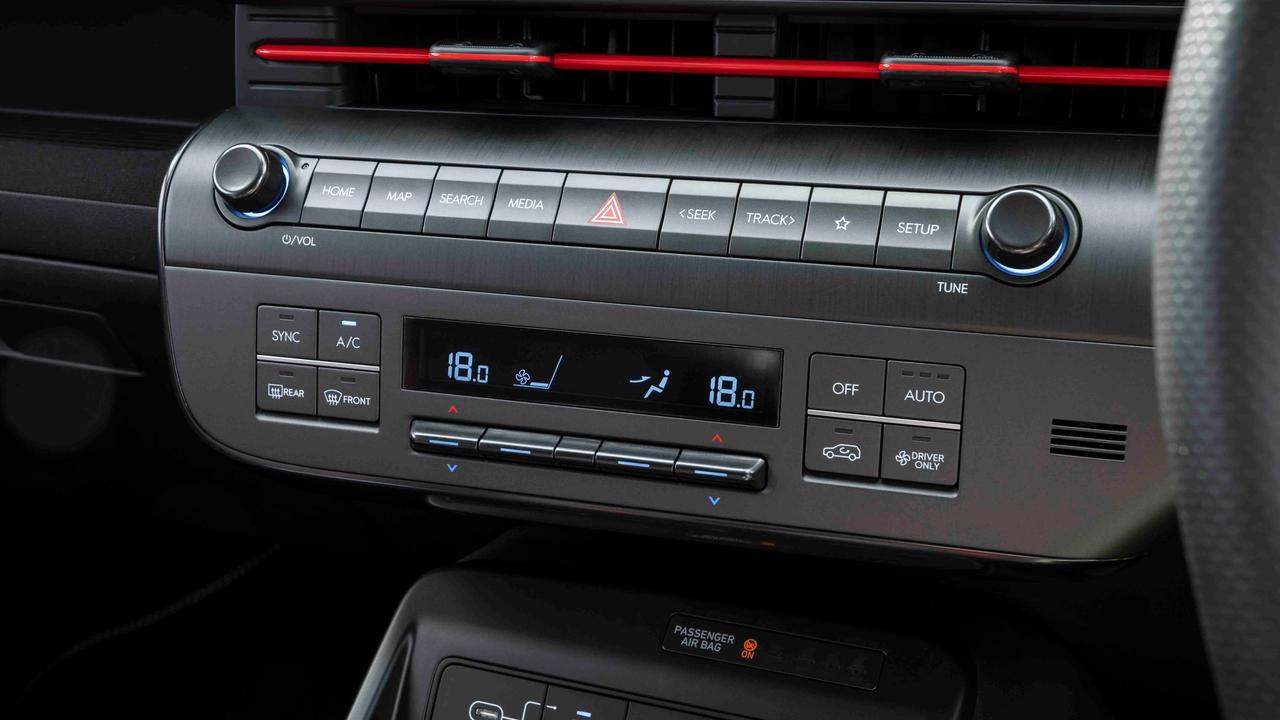
Despite its ‘out-there’ looks, the Kona’s rearward visibility isn’t any worse than rivals. A reversing camera and sensors come as standard so you don’t biff the Kona’s creative styling into an unforgiving post. You’ve certainly got a better view of what’s behind you in the Kona than in the Toyota C-HR.
There’s a decent amount of adjustment in the seats and steering wheel, and driver’s lumbar support comes as standard, so it should be easy to find a comfortable driving position. Your passenger gets height adjustment, too, which isn’t always a given.
Standard equipment
Advance is the entry-level trim in the Kona lineup, but you wouldn’t know it. Not with a lengthy equipment list that includes 17-inch alloy wheels, two-zone climate control, LED lights all round, keyless entry, intelligent speed limit assist and auto emergency braking. Plus adaptive cruise control if you pick an automatic gearbox.
N Line and N Line S trims get an exclusive styling pack, plus heated seats front and rear, ambient lighting, privacy glass, a heated steering wheel, an electric boot lid and wireless phone charging. Additionally, N Line S gets cooled and powered front seats, suede upholstery, upgraded headlights and extra safety gizmos.
Top-spec Ultimate adds leather seats and a sunroof.
Infotainment and audio
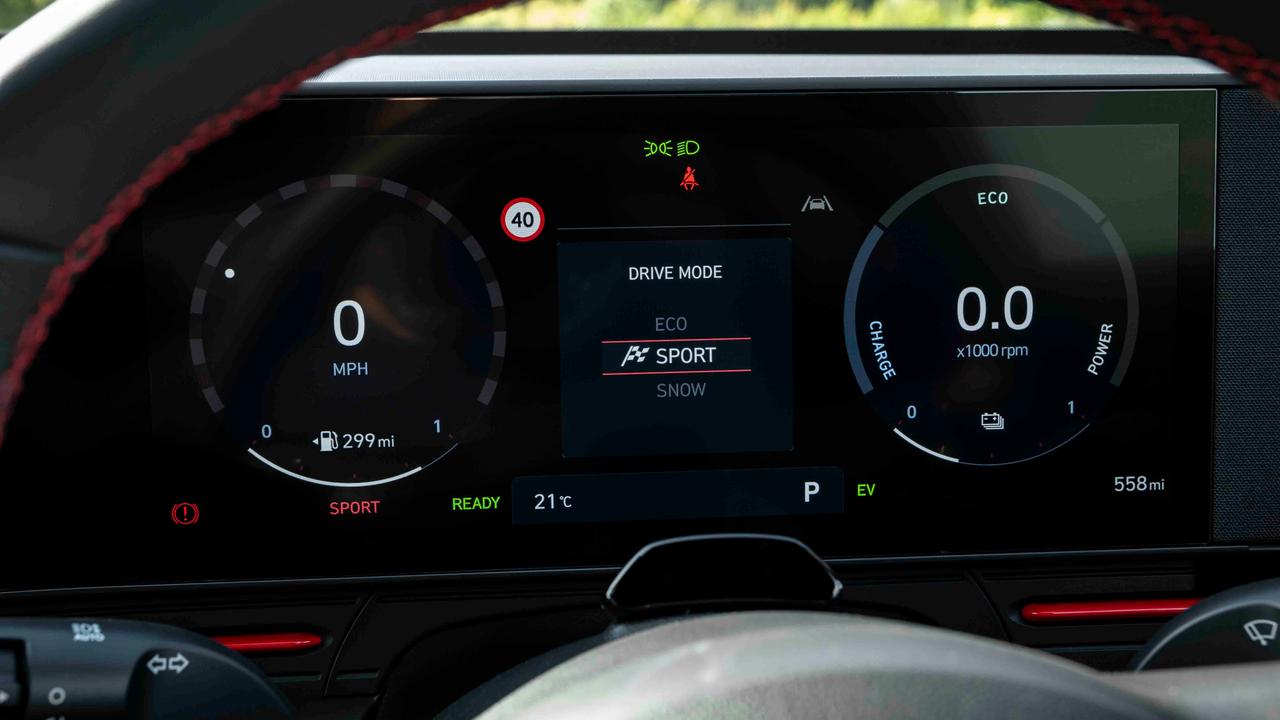
Gone are the days when cheaper Hyundai models would get little more than a radio. The Kona comes with a 12.3-inch digital instrument cluster and a 10.25-inch touchscreen as standard.
The instrument cluster throws a lot of information your way, but it’s laid out well – all the important stuff is easily readable at a glance. As with many similar systems, it’s able to show a number of screens and info menus if you toggle the steering wheel buttons.
The high-contrast touchscreen is crisp and easy to read, thanks to a clear font and white writing on a black background. It’s easy to use if you’re used to a smartphone, as well, with the home screen featuring the most frequently used menus and others accessed with a swipe across.
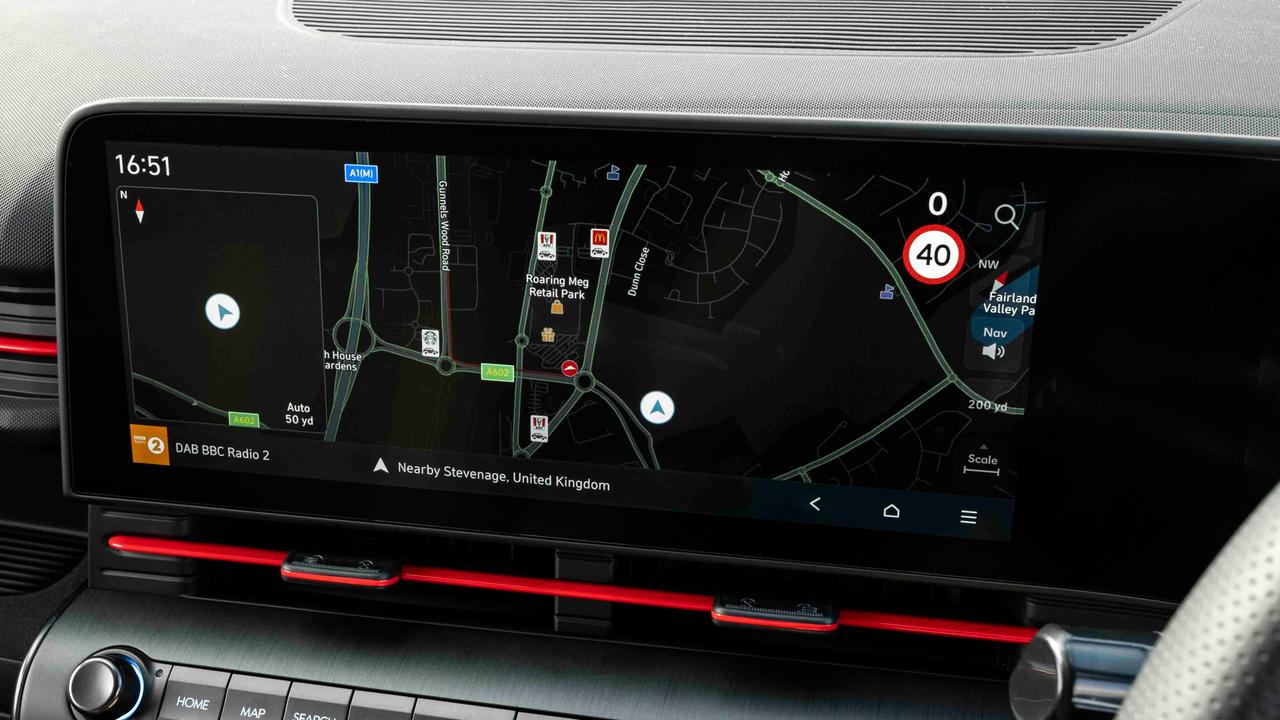
Of course, you can also use the shortcut buttons beneath to get to key functions – such as the sat nav and media playback. There’s also a configurable star button that can be set up to your preference.
The touchscreen features built-in sat nav as standard, with Hyundai’s BlueLink live traffic features. If you’d rather use your familiar apps, Apple CarPlay and Android Auto are included, too. It seems a bit of an oversight that you only get a head-up display on the top-spec electric version, however.
We had no issues with the standard-fit audio system, but a seven-speaker Bose system with a subwoofer is fitted on N Line S and Ultimate trims if you want an upgraded audio experience.
Rear seat space
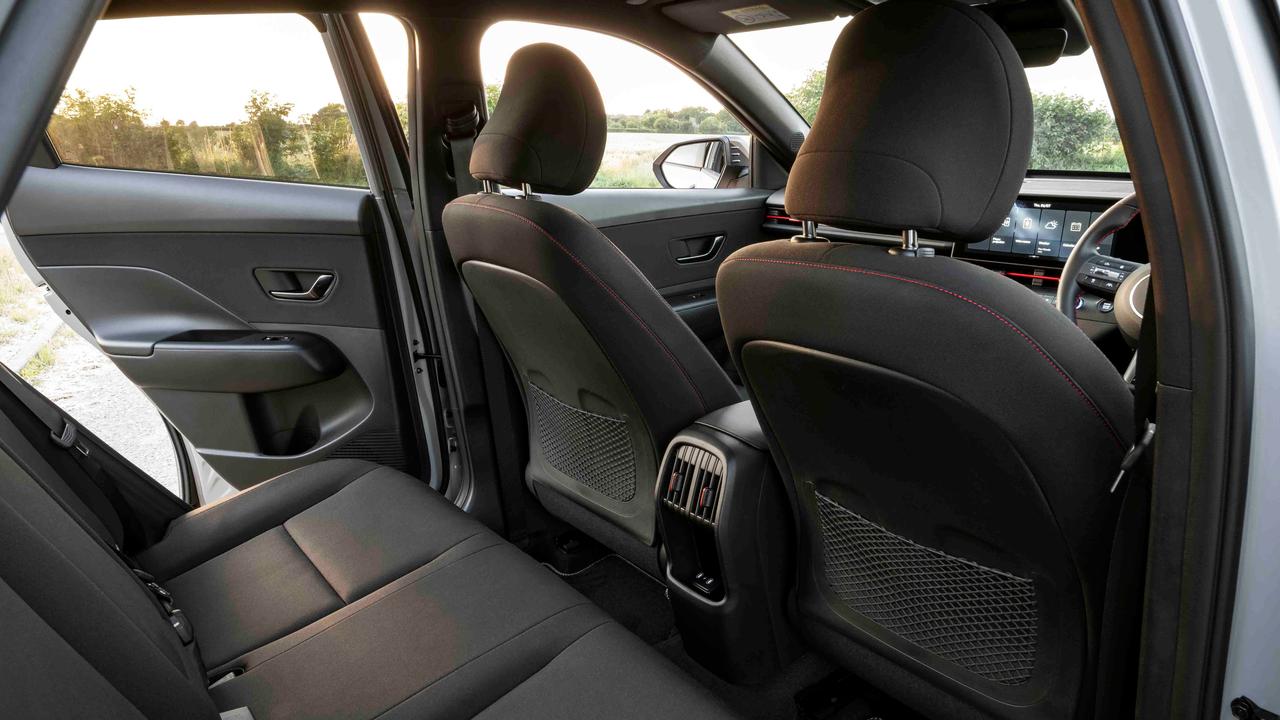
The new Kona has grown versus its predecessor, and passenger space has had a welcome boost. Adults sitting in the back of the old Kona would probably feel squeezed, whereas in the new model there’s enough space for two tall-ish adults to sit one behind the other. It’s certainly not the most spacious SUV – the likes of the Peugeot 2008 and Kia EV3 are even roomier – but it’s not bad by any stretch of the imagination.
Back-seat materials aren’t quite as nice as those in the front. They’re harder-wearing in the back, which isn’t necessarily a bad thing if you’re going to be transporting messy kids around.
Even though the materials are scratchy, the rear seats are quite well equipped – a pair of USB-C sockets come as standard (matching a pair in the front), along with air vents, seatback pockets, a centre armrest and, on electric models, a proper three-pin plug socket to allow you to charge other devices from the Kona’s high-voltage battery.
The Isofix points are hidden in the seatbacks, so you might need to use an adaptor to make them easier to find if you’re taking children along. The Kona won’t be particularly difficult to get kids in and out of, although taller, boxier rivals like the Nissan Qashqai might make it easier.
Boot space
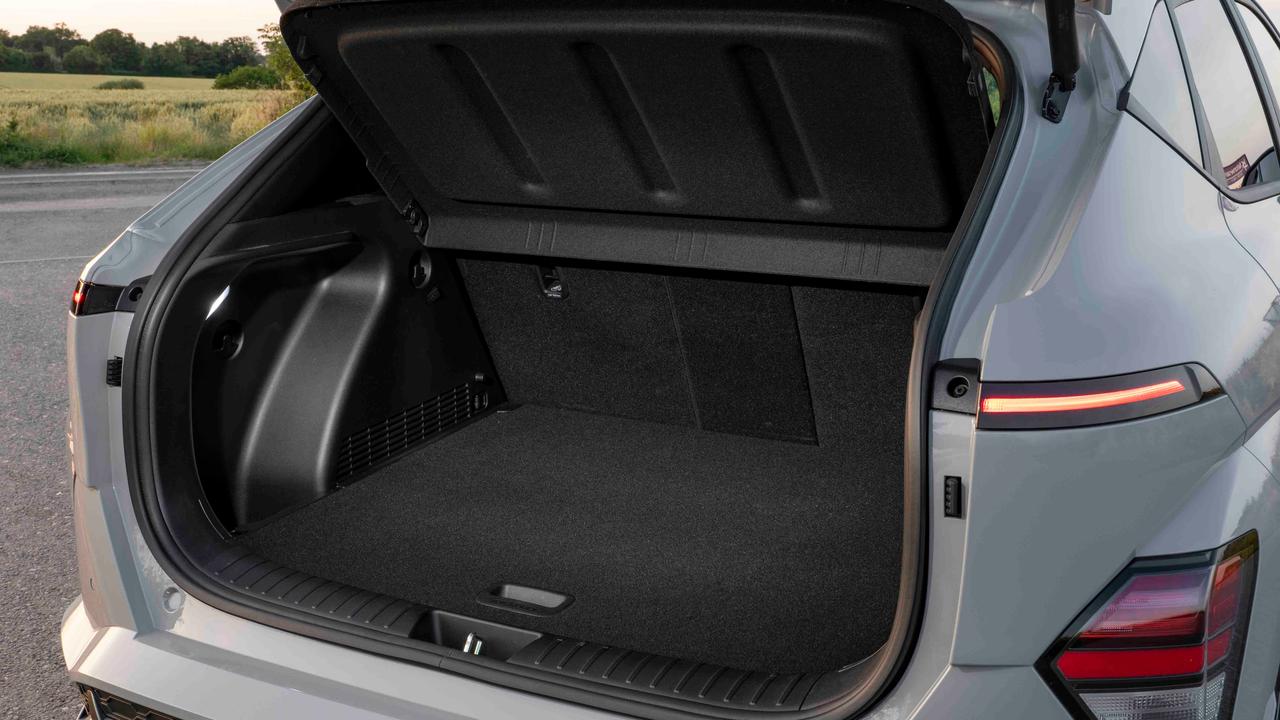
The old Kona lags behind the best in class where boot space is concerned – petrol cars get 374 litres, dropping to just 332 litres in electric models. But the new model has a comparatively huge 466 litres in every model. That’s right up there with the best in class, such as the Peugeot 2008, Skoda Elroq, Kia Niro and Renault Captur.
Flipping the seats down frees up 1,300 litres if you’re happy to load to the roof. The seats split-fold individually on top models.
On automatic cars, there’s a really useful centre console storage area with flip-out cupholders – giving you the choice of somewhere to put your drink or your day bag. Unfortunately, on manual cars, that space is taken up by the gearlever. Even so, you’ll find the big door bins, phone tray and glovebox useful.

































